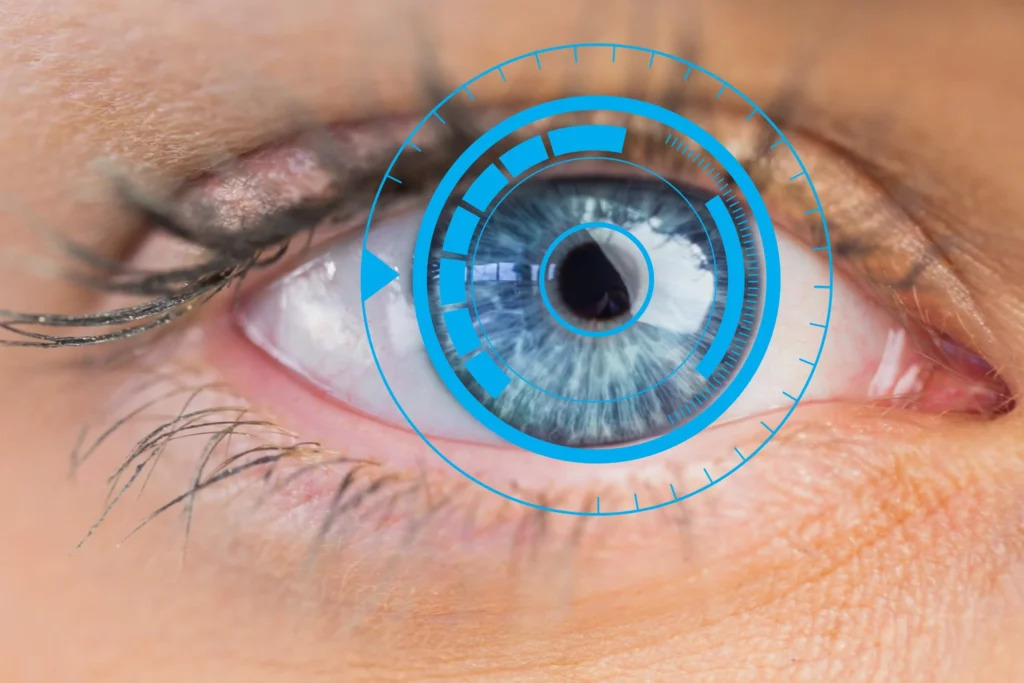Cataract surgery has undergone a remarkable transformation over the years, evolving from a complex and daunting procedure to a highly refined and routine operation. Today, it is one of the most commonly performed surgeries worldwide, offering millions of people a chance to regain their vision and improve their quality of life. This article will guide you through the entire process, from the initial consultation to recovery, highlighting the advancements that have made modern cataract surgery safe and effective.
The Importance of Early Consultation
Recognising the early signs of cataracts is crucial for timely intervention. Patients often experience blurred vision, difficulty with night vision, and sensitivity to light. If these symptoms arise, seeking a consultation with an eye care professional is essential.
In summary, the modern cataract operation represents a significant advancement in ophthalmic surgery, offering patients a safe and effective means of restoring their vision. From the initial consultation through to recovery, each stage is designed to ensure a smooth experience and optimal outcomes.

Understanding Cataracts
Cataracts occur when the lens of the eye becomes cloudy, hindering the passage of light and leading to impaired vision. This condition is often age-related, but can also result from other factors such as diabetes, prolonged use of corticosteroids, or previous eye injuries. Understanding the nature of cataracts is the first step towards effective treatment.
In addition to the common symptoms, individuals may also notice changes in the way they perceive colours, with hues appearing duller or more muted. This gradual alteration can be particularly disconcerting for those who enjoy activities such as painting or photography, where colour distinction is paramount. Furthermore, cataracts can progress at different rates for different individuals, meaning that some may require intervention sooner than others. Regular eye examinations become increasingly important as one ages, allowing for early detection and management of this condition.
Learn more on: Why Timely Cataract Removal Can Preserve Long-Term Eye Health
The Consultation Process
During the initial consultation, the ophthalmologist will conduct a comprehensive eye examination. This typically includes a visual acuity test, a slit-lamp examination, and a dilated eye exam to assess the extent of the cataract. These tests help the doctor determine the best course of action and whether surgery is necessary.
Patients will also have the opportunity to discuss their symptoms, medical history, and any concerns they may have about the surgery. This open dialogue is vital for establishing trust and ensuring that patients feel comfortable with the proposed treatment plan. Moreover, the ophthalmologist may provide insights into the types of intraocular lenses available, which can significantly affect post-surgery vision quality. Understanding the options, such as monofocal, multifocal, or toric lenses, can empower patients to make informed decisions that align with their lifestyle and visual needs. Read more about lenses at https://umc.edu/Healthcare/Eyes%20and%20Vision/Contact-%20Lens.html
Preparing for Surgery
Once cataract surgery is deemed necessary, preparation becomes the next crucial step. This phase involves several components to ensure that patients are ready for the procedure and understand what to expect.

Preoperative Assessments
Prior to surgery, a series of assessments will be conducted to evaluate the patient’s overall health and suitability for the procedure. This may include blood tests, an assessment of current medications, and discussions about any allergies or pre-existing conditions. These evaluations help to minimise risks and ensure a smooth surgical experience.
In addition to these standard assessments, patients may also undergo a comprehensive eye examination, which includes measuring the curvature of the cornea and the length of the eye. These measurements are crucial for determining the correct power of the intraocular lens (IOL) that will be implanted during surgery. Furthermore, patients are encouraged to discuss any concerns or anxieties they may have about the procedure, as addressing these can significantly enhance their confidence and comfort levels leading up to the surgery.
Choosing the Right Lens
One of the most significant decisions patients face is selecting the appropriate intraocular lens (IOL) to replace the cloudy lens after cataract removal. There are various types of IOLs available, including monofocal, multifocal, and toric lenses, each offering different benefits depending on the patient’s visual needs.
During the consultation, the ophthalmologist will explain the options available and help the patient make an informed decision based on their lifestyle and visual requirements. This personalised approach ensures that the chosen lens aligns with the patient’s expectations for post-surgery vision. For instance, those who lead an active lifestyle or have specific visual demands, such as reading or working on computers, may benefit from multifocal or accommodating lenses that allow for clear vision at multiple distances. Additionally, patients should consider factors such as potential side effects and the longevity of the lens, as these can influence their overall satisfaction with the surgical outcome. Click here to find more about distances.
The Surgical Procedure
Modern cataract surgery is typically performed on an outpatient basis, meaning patients can return home the same day. The procedure itself is relatively quick, often lasting less than an hour, and is performed under local anaesthesia. This allows patients to remain awake and alert during the surgery, which can help alleviate anxiety and provide reassurance as they can communicate with the surgical team throughout the process.
Step-by-Step Overview
The surgery begins with the administration of anaesthetic eye drops to numb the area. The ophthalmologist then makes a small incision in the cornea to access the lens. Using advanced techniques such as phacoemulsification, the surgeon breaks up the cloudy lens using ultrasound waves, which are then gently suctioned out. This method not only minimises trauma to the eye but also allows for a quicker recovery compared to traditional surgical techniques.
Once the cataract has been removed, the chosen IOL is inserted into the eye through the same incision. The IOL is designed to remain in place without the need for stitches, allowing for a quicker recovery. Finally, the incision is closed, and the patient is monitored briefly before being discharged. Post-operative care is crucial, and patients are typically provided with detailed instructions on how to care for their eyes during the healing process, including the use of prescribed eye drops to prevent infection and reduce inflammation.
Technological Advancements
Recent advancements in technology have significantly improved the safety and effectiveness of cataract surgery. For instance, femtosecond laser-assisted cataract surgery allows for greater precision in making incisions and fragmenting the lens, reducing the risk of complications and enhancing recovery times. This technology not only streamlines the surgical process but also provides a more customised approach to each patient’s unique eye anatomy, which can lead to improved visual outcomes.
Additionally, the use of advanced imaging systems helps surgeons plan the procedure more accurately, leading to better visual outcomes. These innovations have made cataract surgery a highly successful and reliable option for restoring vision. Furthermore, the introduction of premium intraocular lenses, which can correct astigmatism and presbyopia, offers patients the opportunity to achieve a broader range of vision post-surgery, reducing their dependence on glasses or contact lenses. As research continues and new technologies emerge, the future of cataract surgery looks increasingly promising, with the potential for even more enhanced patient experiences and outcomes.
Post-Operative Care
Following the surgery, patients will receive specific instructions on how to care for their eyes and what to expect during the recovery process. Adhering to these guidelines is crucial for ensuring optimal healing and visual outcomes.
Immediate Recovery
After the procedure, patients may experience mild discomfort, blurred vision, or sensitivity to light. These symptoms are typically temporary and should improve within a few days. It is essential to rest and avoid strenuous activities, as well as to refrain from rubbing or touching the eyes.
Patients are usually prescribed eye drops to prevent infection and reduce inflammation. It is vital to follow the prescribed regimen diligently to promote healing and minimise the risk of complications.
Follow-Up Appointments
Follow-up appointments are scheduled within a few days after surgery to monitor the healing process and assess visual improvement. During these visits, the ophthalmologist will check for any signs of complications and ensure that the IOL is functioning correctly.
Most patients experience significant improvements in their vision shortly after surgery, with many achieving 20/25 vision or better. However, it is essential to remember that full visual recovery may take several weeks, and patience is key during this period.
Long-Term Outcomes and Lifestyle Adjustments
One of the most rewarding aspects of cataract surgery is the long-term improvement in quality of life. Many patients report enhanced visual clarity, allowing them to engage in activities they may have previously found challenging.
Adapting to New Vision
While the majority of patients experience positive outcomes, some may need to adjust to their new vision. This can include adapting to changes in depth perception or light sensitivity. It is crucial for patients to communicate any concerns with their eye care professional, who can provide guidance and support.
For those who have chosen multifocal or toric lenses, additional adjustments may be necessary as they become accustomed to the different focal points. This transition period is normal and should improve over time.
Maintaining Eye Health
Following cataract surgery, maintaining regular eye examinations is vital for ongoing eye health. These check-ups allow for early detection of any potential issues, ensuring that patients can continue to enjoy their improved vision.
Additionally, adopting a healthy lifestyle can contribute to long-term eye health. This includes a balanced diet rich in antioxidants, regular exercise, and protecting the eyes from excessive sun exposure. Simple measures such as wearing sunglasses and avoiding smoking can significantly reduce the risk of developing further eye conditions.
Conclusion
With the support of skilled professionals and the latest technology, individuals suffering from cataracts can look forward to a brighter future. By understanding the process and taking proactive steps towards eye health, patients can reclaim their vision and enhance their quality of life.
As cataract surgery continues to evolve, ongoing research and innovation promise to further improve outcomes and accessibility for patients worldwide. Embracing these advancements will undoubtedly lead to a future where clear vision is attainable for all.
